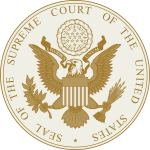 This is my final posting as the Faculty Blogger for the Month of May. Thanks to everyone who has commented on my posts and a special thanks to my colleague Michael O’Hear.
This is my final posting as the Faculty Blogger for the Month of May. Thanks to everyone who has commented on my posts and a special thanks to my colleague Michael O’Hear.
As we await word on the nomination of Justice Souter’s replacement on the Supreme Court, many observers are wondering whether the change in personnel will make any difference in the Court’s jurisprudence. The consensus seems to be that the direction of the Court will not change significantly. Depending upon whom President Obama nominates, however, there is one area where Justice Souter’s replacement may make a difference.
Twice in our nation’s history, we faced periods when the presidency and Congress changed hands from one political party to another, and the victorious party embarked on an ambitious legislative program, only to be frustrated in their efforts by a Supreme Court dominated by holdovers from the prior regime. The first time this happened was in 1801, when the Republicans (as they were then called) routed the Federalists led by John Adams. Thomas Jefferson and his fellow Republicans took power only to clash with John Marshall and other Federalist judges. The second time this happened was in 1932, when Franklin Roosevelt and the Democratic Congress passed the legislative program they called the “New Deal” only to have a Supreme Court dominated by Republican appointees strike down important elements of that program as unconstitutional.
Are we currently experiencing a third such period of conflict — where the Supreme Court will frustrate and delay the legislative priorities of the two political branches under the control of the Democratic Party? On most subjects, the answer is “no.” On issues such as civil liberties, separation of powers, and federal vs. state authority the Roberts Court does not seem to have a majority bloc capable of consistently advancing conservative principles. This is primarily due to Justice Kennedy’s frustrating refusal to be pigeonholed into any clear ideological camp, preferring instead to chart a middle course of narrow, fact-based rulings. With Justice Souter’s retirement, it appears that the Court will remain one vote shy of a consistent conservative majority.
However, there is one subject area where the potential exists for a showdown between a solid conservative majority of the Justices and a more liberal Congress and President: the area of civil litigation to enforce economic rights. Faced with pervasive insecurity among the general public concerning its economic future, the Democratic Congress will be tempted to create new legal rights in matters of employment, financial markets, and health care. Whether these rights are effectively enforceable in the courts will turn on seemingly mundane questions of civil procedure.
In recent years, the Supreme Court has construed the enforceability of congressionally created rights quite narrowly, and in ways that have limited the ability of aggrieved individuals and businesses to sue. There seems to be a bloc of five Justices that views civil litigation in the federal courts as unduly expensive and too easily abused by the plaintiffs bar. In several recent cases this bloc has frustrated the attempts of Congress to enlist the federal courts in the enforcement of congressionally created economic rights.
Justice Souter voted with the majority in many of these cases, such as Tellabs, Inc. v. Makor Issues & Rights, Ltd., (strictly construing pleading standard in securities fraud litigation); Credit Suisse Securities v. Billing, (holding antitrust claims subject to dismissal where securities claims are available); and Bell Atlantic Corp. v. Twombly, (importing the heightened pleading standards of securities fraud into antitrust law). These and similar cases can be criticized as intruding into the province of the jury, by allowing federal judges to dismiss cases on the pleadings where the judge considers the factual allegations implausible but a jury might disagree. One notable exception to this voting pattern is Ledbetter v. Goodyear Tire & Rubber Co., where Justice Souter dissented from the majority’s less than empathetic holding that the statute of limitations in a pay discrimination case brought under Title VII begins running the very first time that the plaintiff receives disparate pay.
The Supreme Court’s willingness to impose procedural hurdles on litigants would seem to spell trouble for any future Congress that seeks to expand consumer or economic rights through the use of civil litigation. The Roberts Court seems to see itself as a defender of the scarce time and resources of a federal court system overburdened by litigation of dubious utility. Certainly the Court’s recent rulings in business cases serve to undermine liberal concepts of notice pleading. However, because Justice Souter often provided a fifth vote in these cases, it is possible that his replacement might provide the crucial vote to reverse this trend.
